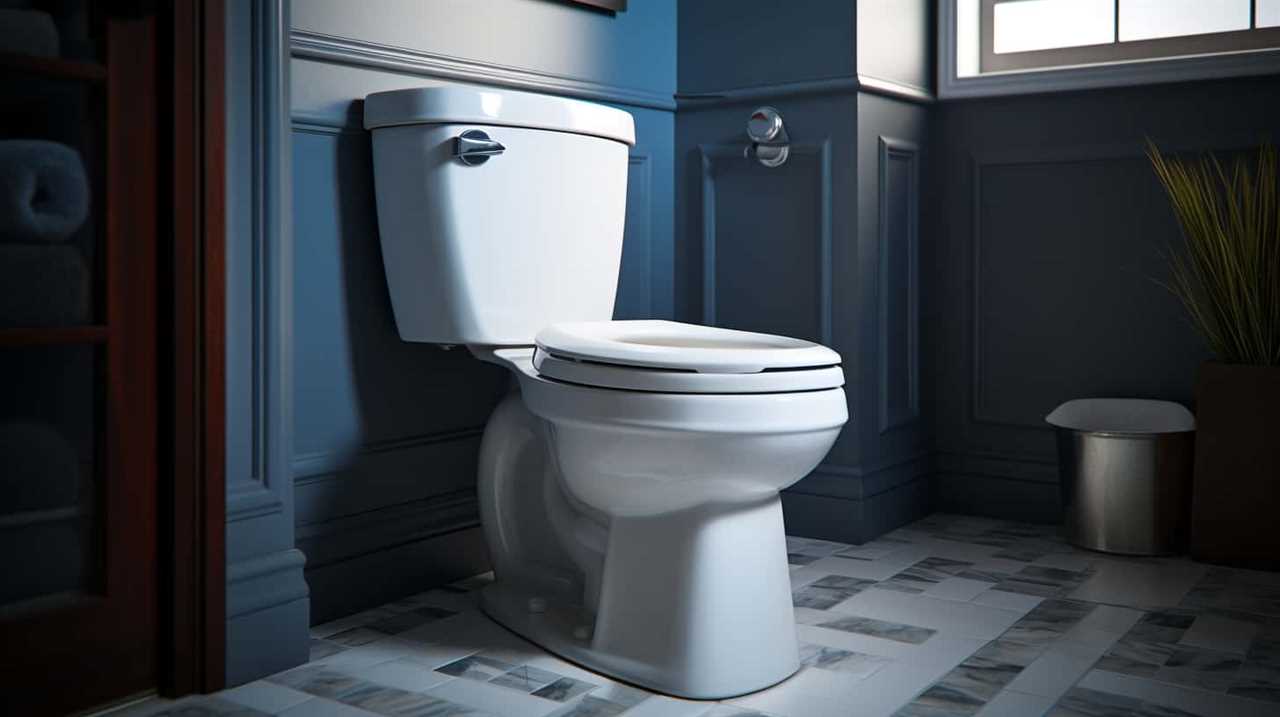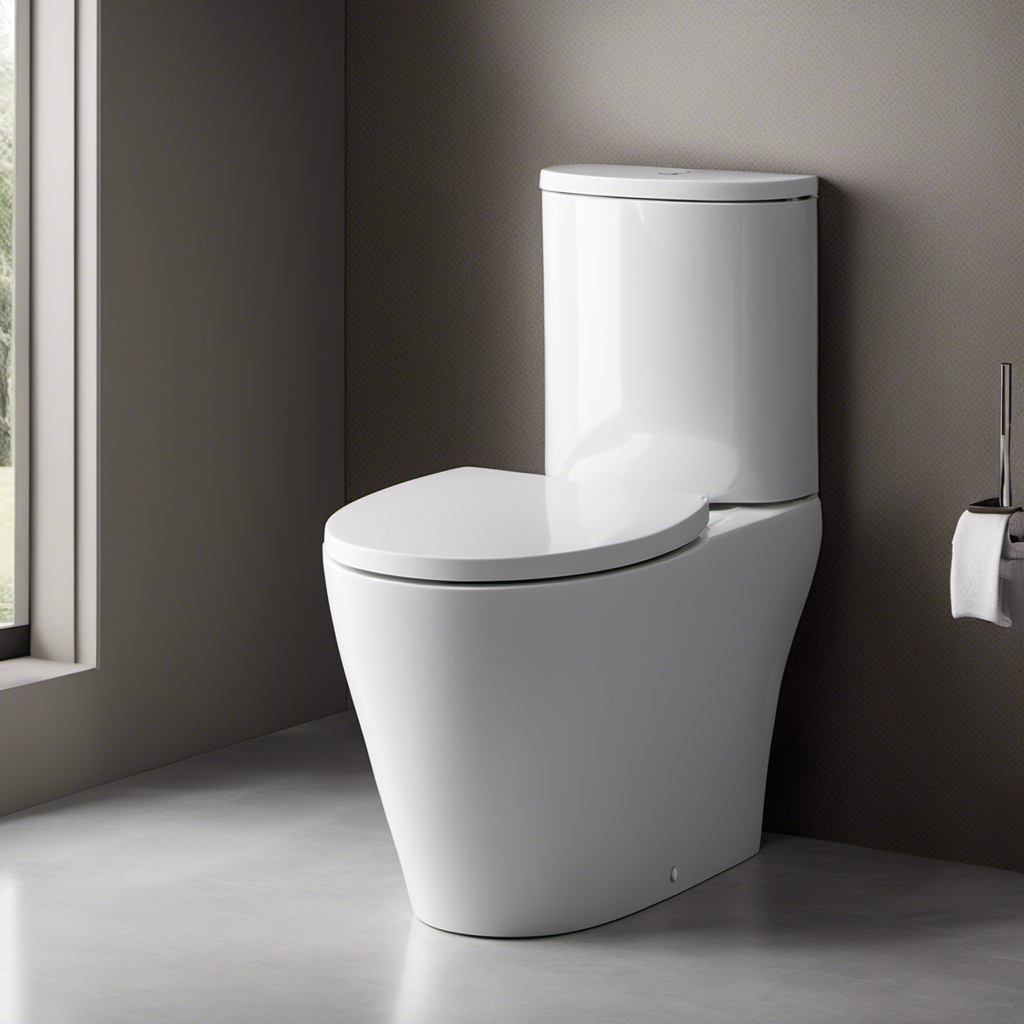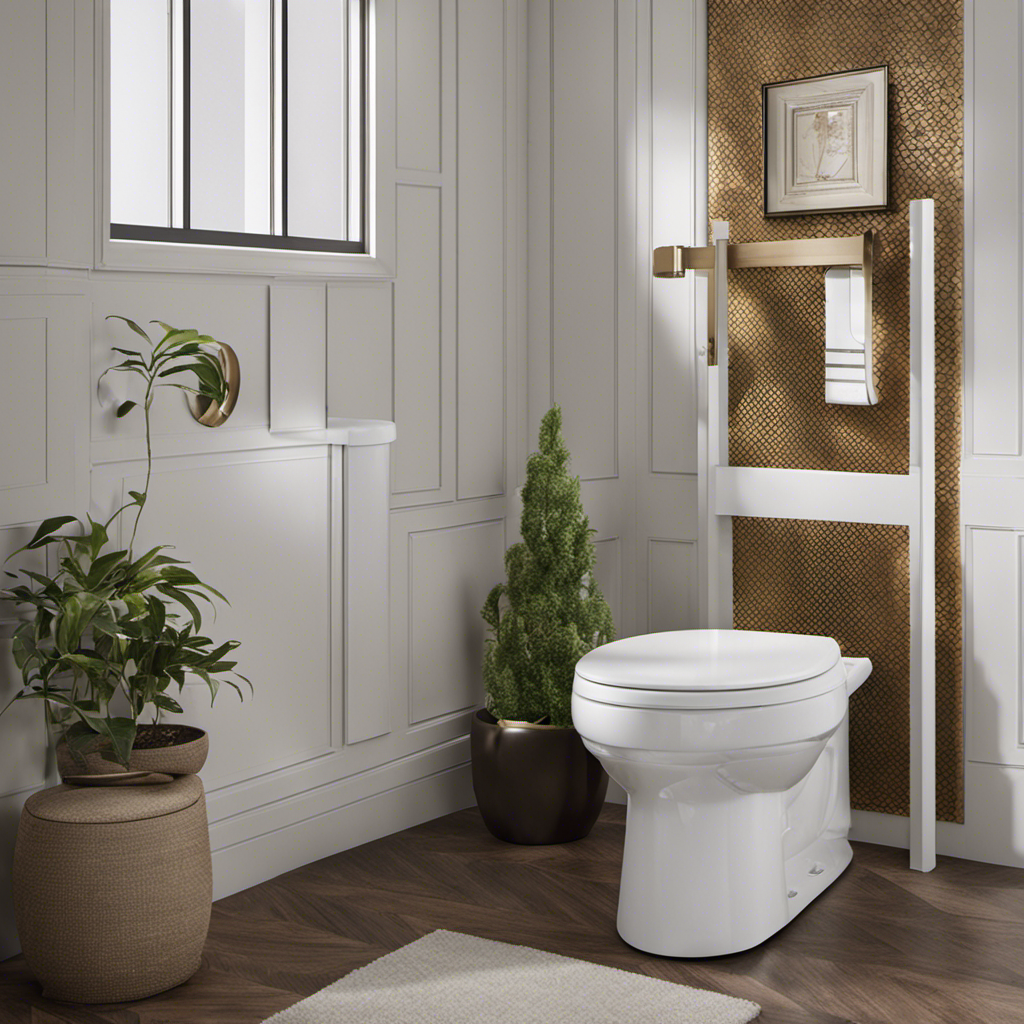We may not realize it frequently, but the toilet flush tank is a crucial component of our everyday routine. It silently remains in place, carrying out its duties until we require its assistance.
But have you ever stopped to consider the different types of flush tanks available? Or the key features to look for when choosing one?
In this article, we will delve into the world of toilet flush tanks, exploring their importance, common problems, and maintenance tips for longevity.
Get ready to master the art of the flush tank!

Key Takeaways
- There are three types of toilet flush tanks: gravity flush, dual-flush, and pressure-assisted flush tanks.
- Key features to consider when choosing a flush tank include user-friendly installation, eco-friendly options, water-saving mechanisms, sturdy construction, and easily accessible buttons.
- Proper water level is important for efficient flushing and water conservation, with high water level leading to wastage and low water level leading to incomplete flushing.
- Common problems with flush tanks include incorrect installation, leaking flapper, faulty fill valve, and blocked overflow tube, which can be solved by ensuring secure attachment, replacing the flapper or fill valve, and clearing debris or mineral buildup.
Types of Toilet Flush Tanks
In this article, we’ll discuss the various types of toilet flush tanks.
When it comes to choosing a toilet flush tank, there are a few options available that incorporate water-saving technology.
The first type is the gravity flush tank, which uses the force of gravity to flush the waste. It’s a simple and reliable option that can help reduce water consumption and lower your water bills.
Another type is the dual-flush tank, which provides two flushing options: a full flush for solid waste and a half flush for liquid waste. This allows you to use less water when appropriate, resulting in significant savings on your water bills.
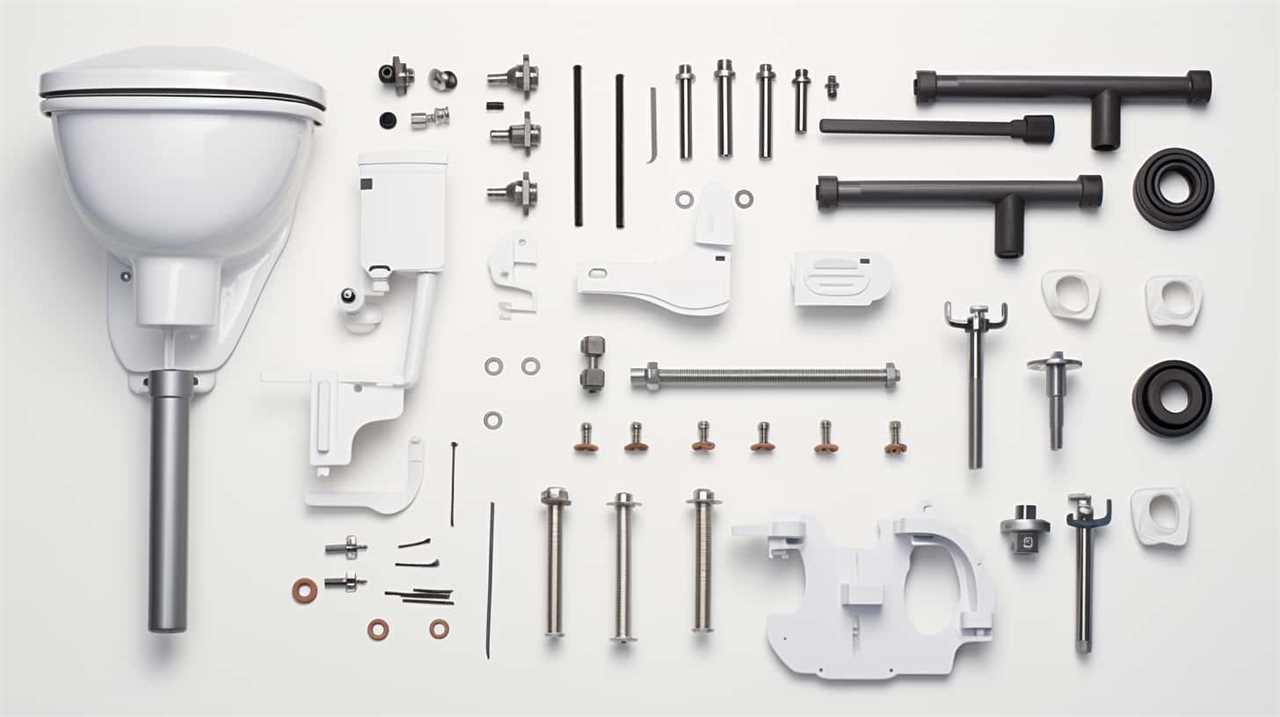
Lastly, there are also pressure-assisted flush tanks, which use compressed air to enhance the flushing power, ensuring a thorough and efficient flush while still saving water. These tanks are ideal for high traffic areas or commercial settings.
Key Features to Consider
When considering key features for a toilet flush tank, we frequently prioritize water-saving technology and efficiency. These features are crucial for both residential and commercial settings, as they contribute to lower water consumption and reduced utility bills.
One important consideration is the installation process of the toilet flush tank. It should be user-friendly and require minimal effort and time to set up.
Additionally, eco-friendly flush options are becoming increasingly popular. These options include dual-flush systems, which allow users to choose between a full flush or a half flush, depending on their needs.

Another eco-friendly feature to consider is the use of water-saving mechanisms such as low-flow or dual-flush valves, which limit the amount of water used per flush.
Importance of Proper Water Level
One important factor to consider is the optimal water level in the toilet flush tank. Maintaining the correct water level is crucial for both water conservation strategies and optimal toilet flush performance.
When the water level is too high, it can result in unnecessary wastage of water during each flush. On the other hand, if the water level is too low, it may not provide enough force to effectively flush away waste, leading to incomplete flushing and potential clogs.
Achieving the right water level ensures efficient water usage while still providing enough power to clear the bowl effectively. By carefully adjusting and monitoring the water level in the flush tank, we can strike a balance between water conservation and reliable flush performance.
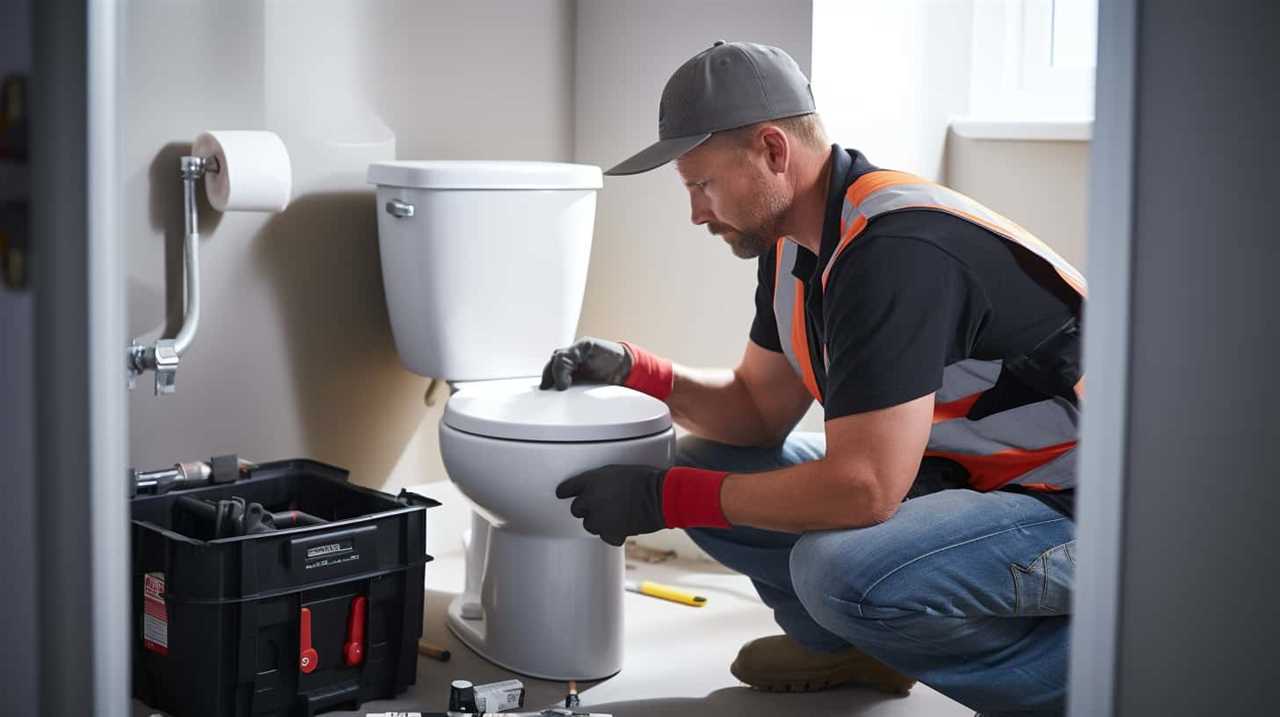
Common Problems and Solutions
Let’s now address some common problems and solutions related to maintaining the optimal water level in the toilet flush tank.
- Incorrect installation: One common issue is an improperly installed flush tank. Ensure that the tank is securely attached to the bowl and that all connections are tight.
- Leaking flapper: A leaking flapper can cause water to continuously flow into the bowl, leading to an inconsistent water level. To solve this problem, replace the flapper with a new one that fits properly.
- Faulty fill valve: If the water level in the flush tank is consistently low, it could be due to a faulty fill valve. Replace the fill valve to ensure a proper water level.
- Blocked overflow tube: A blocked overflow tube can prevent the tank from filling up to the optimal level. Clear any debris or mineral buildup from the tube to restore proper water flow.
Maintenance Tips for Longevity
To ensure the long-lasting performance of our toilet flush tank, regular maintenance is essential.
Proper cleaning and troubleshooting are key to maintaining its functionality. When it comes to toilet flush tank cleaning, start by turning off the water supply and flushing the tank to empty it. Remove any debris or sediment that may have accumulated using a soft brush or cloth.
Inspect the tank components for any signs of wear or damage, such as cracks or leaks. In case of leaks, tighten any loose connections or replace faulty parts.
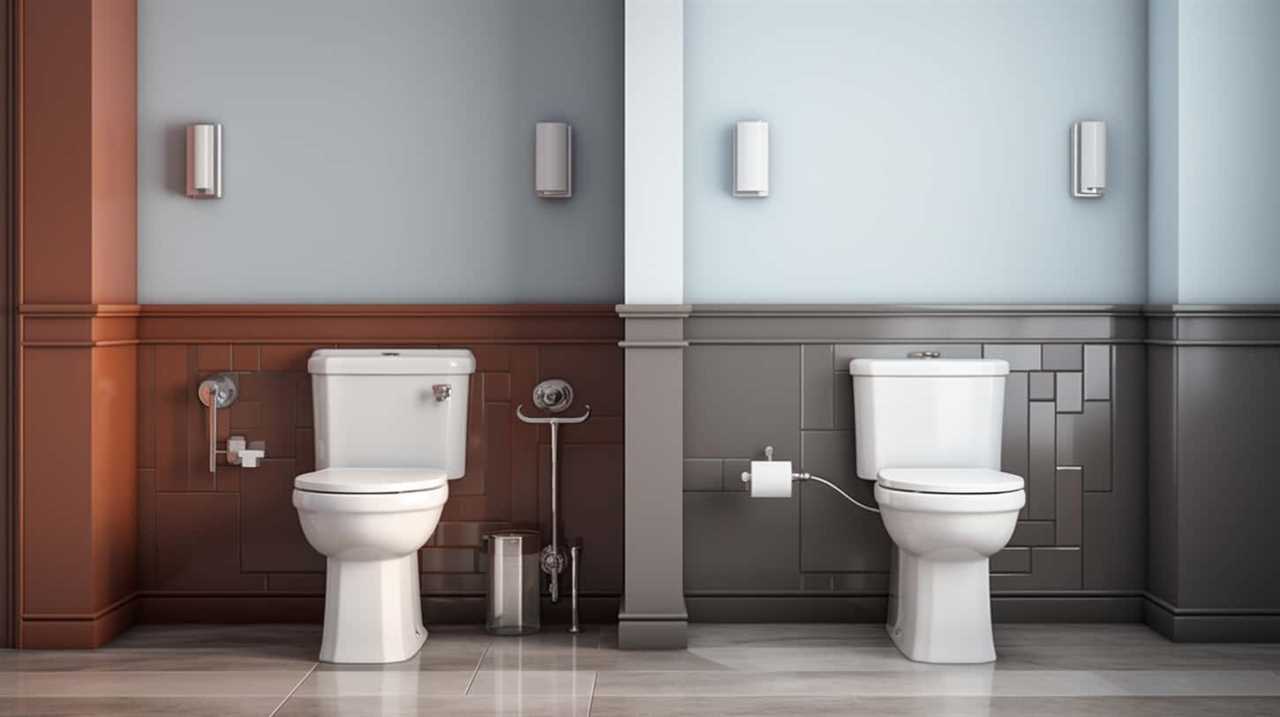
Additionally, it’s important to regularly check and adjust the water level in the tank to prevent overflow or inadequate flushing.
Frequently Asked Questions
How Does a Toilet Flush Tank Work?
Toilet flush tanks work by storing water that is released into the toilet bowl to remove waste. Advancements in flush tank technology have focused on water conservation, with new designs using less water per flush.
What Are the Different Materials Used to Make Toilet Flush Tanks?
Toilet flush tanks can be made from different materials, such as plastic and ceramic. Plastic tanks are lightweight and affordable but can be prone to cracking. Ceramic tanks are durable but heavier and more expensive.
Can I Install a Dual-Flush Toilet Flush Tank in My Existing Toilet?
Yes, we can install a dual-flush toilet flush tank in your existing toilet. Upgrading to a dual flush system offers the benefits of water conservation and increased efficiency, allowing you to choose between a full flush or a partial flush.
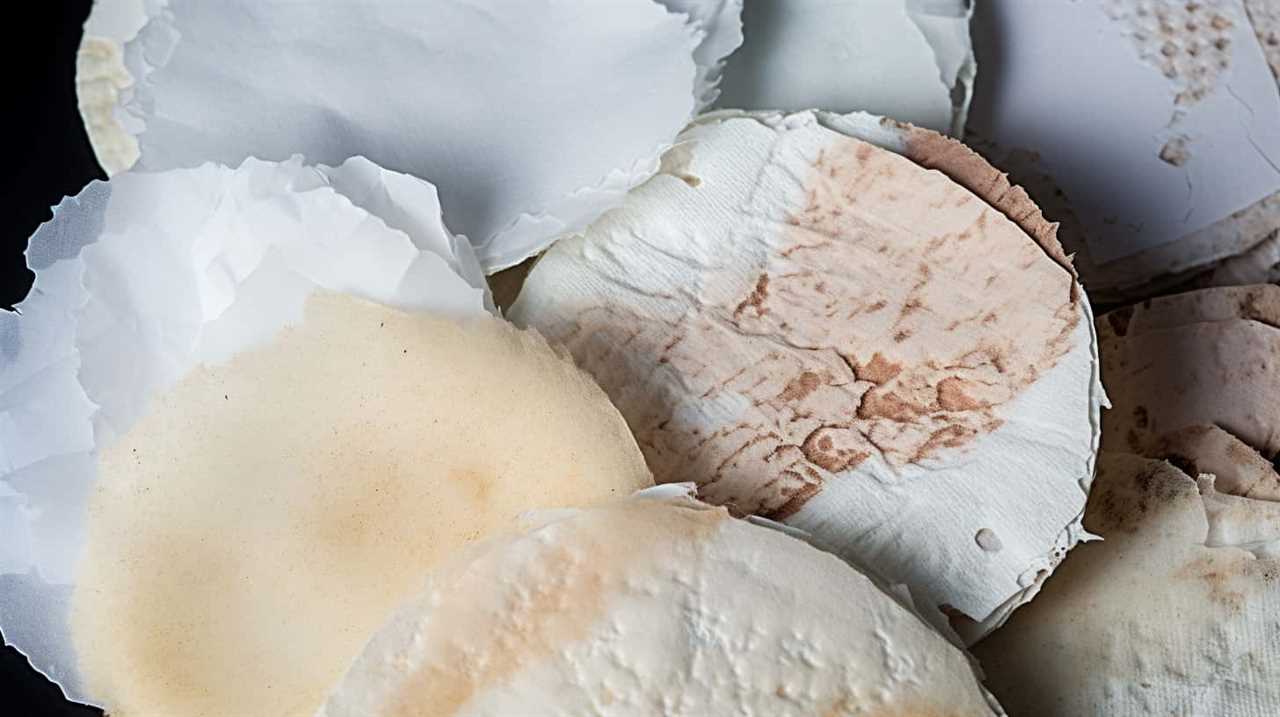
How Do I Adjust the Water Level in a Toilet Flush Tank?
To adjust the water level in a flush tank, start by locating the water level adjustment valve. Turn it clockwise to decrease the water level or counterclockwise to increase it. Common issues include water overflowing or inadequate flushing.
Are There Any Eco-Friendly Options Available for Toilet Flush Tanks?
There are eco-friendly options available for toilet flush tanks. These options offer numerous benefits, such as reducing water consumption and minimizing environmental impact. By choosing an eco-friendly flush tank, we can contribute to a more sustainable future.
Conclusion
In conclusion, the toilet flush tank is an essential component of any bathroom. Understanding the types of flush tanks available and their key features is crucial for making an informed decision.
Maintaining the proper water level is important for efficient flushing. By addressing common problems and following maintenance tips, you can ensure the longevity of your flush tank.
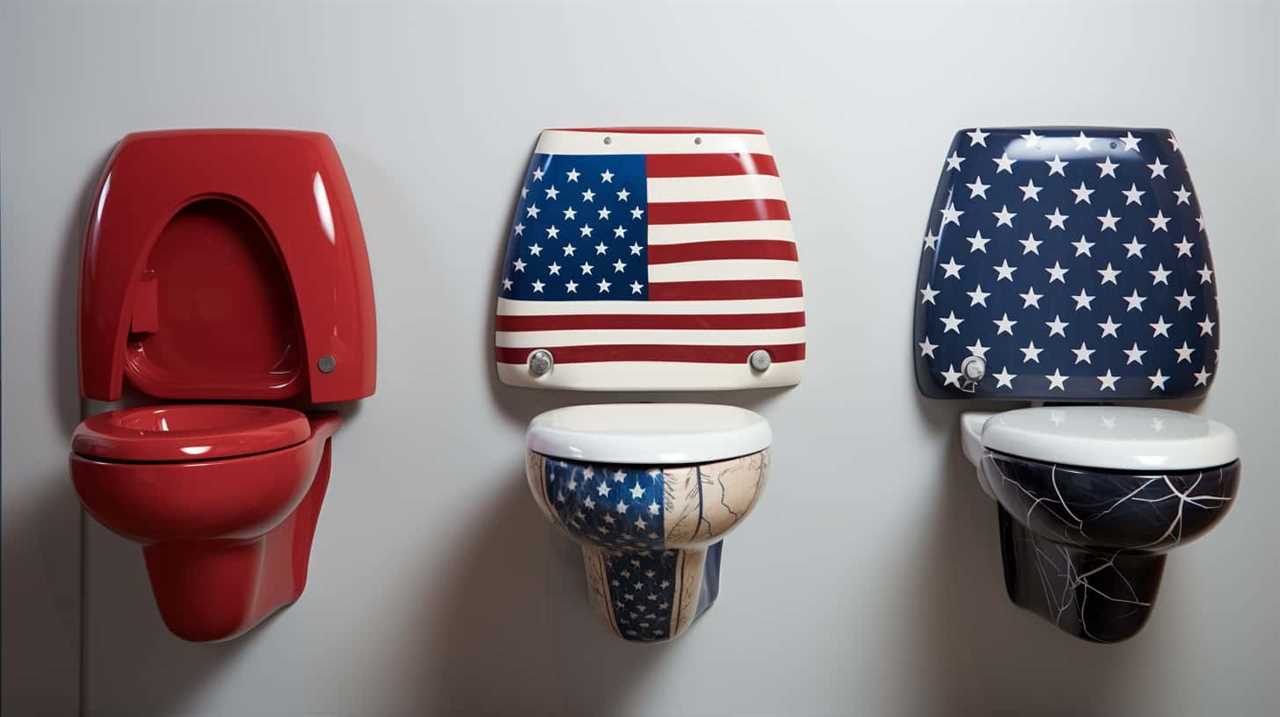
Just like a well-oiled machine, a properly functioning flush tank keeps your bathroom running smoothly.
